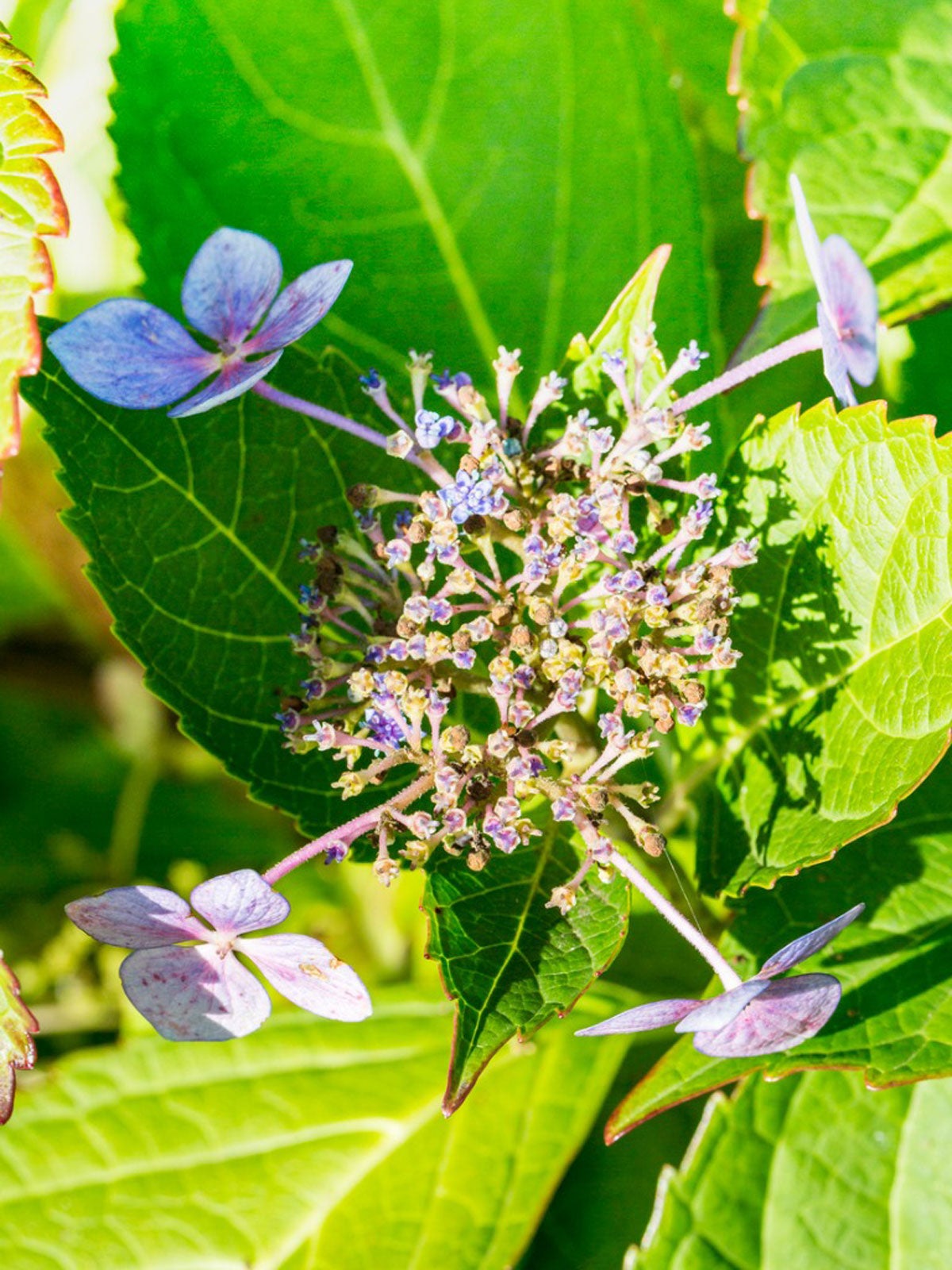Hydrangea Botrytis Blight Disease: Treating Gray Mold On Hydrangea Plants


The bold flowers of hydrangea are a true summer treat. The plants are rarely bothered by pests or disease, although hydrangea botrytis blight can occur. The first signs are discolored flower heads followed by gray mold on hydrangeas. This is a serious disease and can cause damage to the flower buds.
Signs of Hydrangea Botrytis Blight
During cool, damp periods an opportunistic fungus may invade your garden. It is hydrangea gray mold, but it doesn't confine itself just to that genus. Botrytis blight may also attack other ornamental plants. A hydrangea with botrytis will have its flowers attacked initially and as the disease progresses, the foliage will suffer. It’s important to your plants to learn how to diagnose and control this damaging disease.
The fungus Botrytis cinerea starts to appear on the flower buds. The first sign is a fuzzy mold-like growth. The flowers and buds will brown and wither and begin to drop. Once this happens, the spores of the fungus come in contact with the leaves. Water soaked tissue appears and gradually extends to become brown, round to irregular spots.
Once a few flowers have the disease, it can rapidly spread to the entire plant. Usually, initial infection is in the interior flowers and those lower down that do not have adequate circulation.
Controlling Gray Mold on Hydrangeas
Botrytis cinerea is common when the weather is cool and rainy, generally in early to late spring. In a greenhouse, the problem can become an outbreak. In open spaces, the fungal spores can still spread from plant to plant. That includes many other ornamentals, fruits, and vegetables.
The fungus overwinters in dropped plant debris. Plants that grow in shade and are overcrowded are most commonly affected. It is important to clean up any plant debris in such locations to prevent infection.
Before you even have a hydrangea with botrytis, you can take steps to prevent its occurrence. In addition to cleaning up plant debris around the hydrangea, prune the plant so that it is open and can receive air into the interior. Avoid planting groups of hydrangeas too close together.
Sign up for the Gardening Know How newsletter today and receive a free copy of our e-book "How to Grow Delicious Tomatoes".
If the disease has already occurred, nip off any affected flower heads and discard. Use a fungicide in early spring to prevent spores from taking hold. Products containing neem oil, potassium bicarbonate, Bacillus subtilis, or chlorothalanil are effective.

Bonnie Grant is a professional landscaper with a Certification in Urban Gardening. She has been gardening and writing for 15 years. A former professional chef, she has a passion for edible landscaping.